|
With the warmer and certainly wetter late
winter temperatures upon us, the Juniper trees are pollinating
in great numbers, covering everything with a yellow powder. We
set out a microscope slide outside for a night, and by morning,
it was coated with loads of yellow Juniper pollen. Examination
of the pollen revealed a rather bland uninteresting spherical
shape, with a dimpled exterior. Since no other details were present,
I added a drop of water and cover slip over the pollen and discovered
that I could now see the interior cellular structure through
the outer coating. Then something amazing happened - Within minutes,
all the pollen started bursting open, and spilled out their contents
within a time span of around 5 seconds per pollen granule! What
emerged was unexpected - an droplet of oil (lipids actually)
with the fully detailed reproductive cell inside. Here are some
photos of the action!
Click these thumnails
for the full size view:
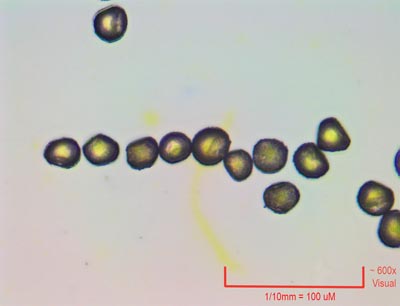 |
In
air and at 600x, there were only yellow jelly beans to see. The
exterior was dimpled with a patterning. But nothing was to be
seen inside. I thought maybe if I added water and a cover slip
I could use the oil immersion lens and see better the dimpling.
|
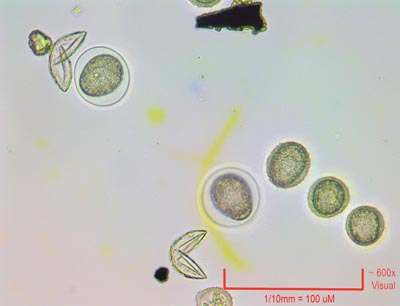 |
By
immersing the pollen in water, the pollens outer covering was
completely transparent! The three on the lower right have not
bursted yet, and you can see right through the waxy coat. On
the left several have emerged from their outer shell, and become
free floating contained in a drop of lipids. The open husk can
be seen as well. The water triggered this response. |
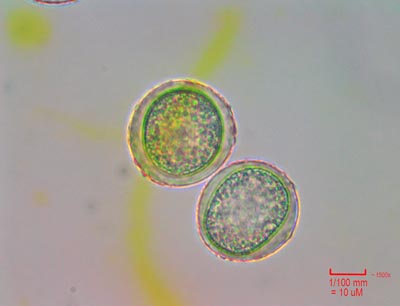 |
Just
before they burst, this is a 1500x view with the oil immersion
lens of two pollen granules in water. Look at the internal details!
Apparently the optical density of the shell is similar to water
and it makes it appear as transparent as glass. |
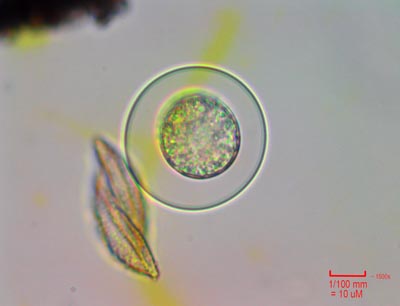 |
Freshly
burst pollen granule at 1500x. The clear oily droplet surrounds
the inner cell. |
 |
Clear
view at 1500x of the individual inside the oily droplet. When
the pollen reaches the female part of the flower it does this
and releases the male reproductive cells. |
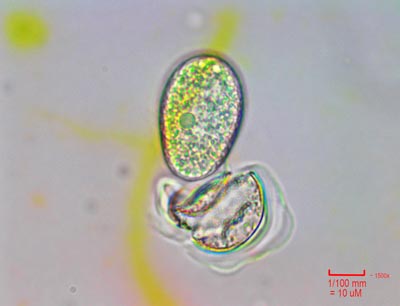 |
The
cell here has emerged from its oily droplet and pollen husk and
is free floating. The internal details are astounding! |
 |
Two
empty husks at 1500x. |
|
Camera: 10 Megapixel CMOS Platform: AmScope Trinocular 2000x Filters: NONE Location: Payson, Az Elevation: 5150 ft. Processing: Photoshop CS Pro HOME






